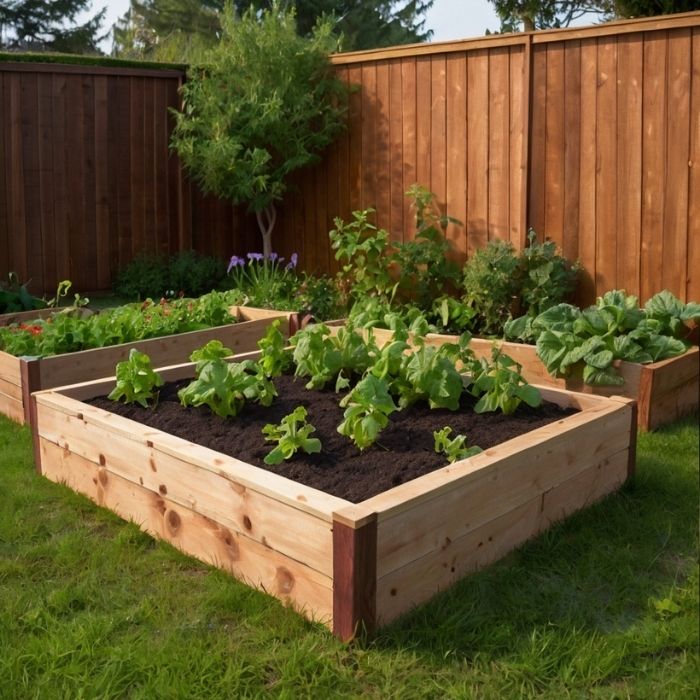Understanding Raised Bed Gardening
Raised bed gardening has become increasingly popular among both novice and experienced gardeners. This method involves creating a garden bed elevated above the surrounding soil, often framed with wood, stone, or other materials. It offers numerous advantages that enhance the gardening experience and improve plant health. In this article, we will explore the key benefits of raised bed gardening, how to set up your own raised beds, and tips for maintaining them effectively.
Benefits of Raised Bed Gardening
Improved Drainage
One of the primary advantages of raised beds is their ability to provide better drainage compared to traditional in-ground gardens. The elevated structure allows excess water to drain away more efficiently, which helps prevent root rot and other issues associated with waterlogged soil14. This is particularly beneficial in areas with heavy clay soils or poor drainage.
Enhanced Soil Quality
Raised beds allow gardeners to control the soil quality more effectively. By filling the beds with a custom soil mix, you can ensure that your plants receive the right nutrients and pH levels necessary for optimal growth25. This is especially useful in regions where the native soil is contaminated or lacks essential nutrients.
Extended Growing Season
The soil in raised beds warms up faster in the spring, allowing for earlier planting and extended growing seasons26. This temperature advantage can lead to healthier plants and increased yields, as crops can be planted earlier and harvested later without the risk of frost damage.
Reduced Weeding
Weeds can be a significant hassle for gardeners, but raised beds help minimize this problem. The physical barrier created by the raised structure reduces weed encroachment from surrounding areas45. Additionally, using mulch or landscape fabric inside the beds can further suppress weed growth.
Accessibility
Raised beds are designed to be more accessible for gardeners of all ages and abilities. The elevated height reduces the need for bending or kneeling, making it easier for individuals with mobility issues or those who simply prefer a more comfortable gardening experience13. This accessibility also makes it easier for children to participate in gardening activities without stepping on plants.
Pest Control
The contained environment of raised beds can help deter pests such as rabbits and slugs. Gardeners can easily implement protective measures like row covers or barriers to keep unwanted visitors at bay36. This not only protects your plants but also reduces the need for chemical pesticides.
Aesthetic Appeal
Raised beds can enhance the visual appeal of your garden. They provide a neat, organized appearance that can be tailored to fit your landscape design47. With various materials and shapes available, you can create a garden that is both functional and attractive.
Setting Up Your Raised Bed Garden
Choosing the Right Location
Selecting an appropriate location for your raised bed is crucial. Look for a spot that receives at least six hours of sunlight per day and has good air circulation. Avoid areas prone to standing water or excessive shade from trees or buildings.
Building Your Raised Bed
You can construct raised beds using various materials such as untreated wood, bricks, or stones. The ideal height for a raised bed is typically between 12 to 24 inches, allowing for ample root growth while remaining accessible56. Ensure that the bed is at least 4 feet wide so you can easily reach all areas without stepping on the soil.
Filling Your Raised Bed with Soil
When filling your raised bed, use a high-quality soil mix that includes compost, peat moss, and vermiculite or perlite for aeration. This combination provides excellent drainage while retaining moisture and nutrients34. Aim for a depth of at least 12 inches to accommodate most vegetable roots.
Maintaining Your Raised Bed Garden
Watering
Raised beds tend to dry out faster than in-ground gardens due to improved drainage. Regularly check soil moisture levels and water as needed, especially during hot summer months46. Consider using drip irrigation systems or soaker hoses for efficient watering.
Fertilizing
To maintain healthy soil quality and support plant growth, incorporate organic fertilizers into your raised bed regularly. Compost tea, fish emulsion, or well-rotted manure are excellent options that provide essential nutrients without harming beneficial microorganisms in the soil35.
Crop Rotation
Practicing crop rotation is essential for preventing nutrient depletion and reducing pest problems. Plan your planting schedule so that different plant families occupy the same space in subsequent years28. This strategy helps maintain soil health and encourages biodiversity.
Conclusion
Raised bed gardening offers numerous benefits that make it an attractive option for gardeners looking to improve their growing conditions. From enhanced drainage and soil quality to reduced weeding and increased accessibility, this method provides practical solutions for various gardening challenges. By setting up your own raised bed garden and following proper maintenance practices, you can enjoy a productive and visually appealing gardening experience. Whether you’re growing vegetables, herbs, or flowers, raised beds are sure to elevate your gardening game!

